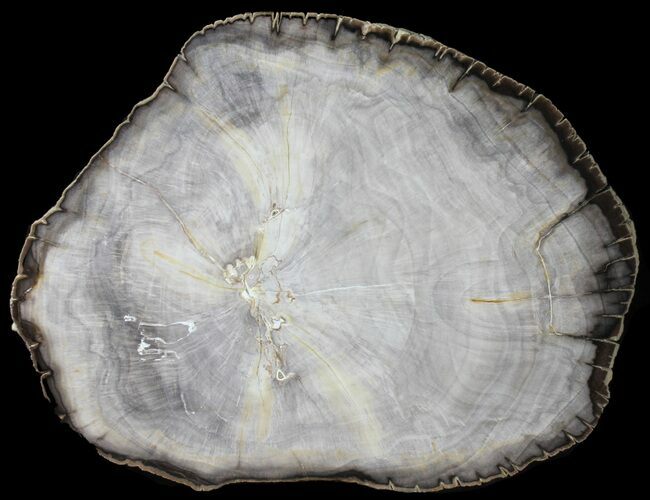This Specimen has been sold.
14.2" Dicot Petrified Wood Round - Chambliss Ranch, Texas
This is a spectacular round of Dicot (a type of broad leaf tree) petrified wood from the Yegua Formation of Texas. It is a rare, collector quality slab with amazing wood grain detail. It has been polished to a mirror like finish and no dull spots or scuff marks. Comes with a display stand.
This is one of the special pieces which was part of a big petrified wood collection that I recently bought containing petrified wood from many unusual locations. Be sure to keep an eye out for more great specimens.
What Is Petrified Wood
Petrified wood is the name given to wood that has been turned into stone (fossilized) through the process of permineralization. In this process, all of the organic matter becomes replaced by minerals, while much of the original structure, such as tree rings, is retained. For this to happen, the wood needs to be buried in an environment low in oxygen to prevent decomposition and with flowing, mineral-laden water, so minerals may replace structures. The coloration is caused by various minerals that present in that water during fossilization. For example, red colors are due to iron compounds, greens due to copper, and so on.
Petrified wood is the name given to wood that has been turned into stone (fossilized) through the process of permineralization. In this process, all of the organic matter becomes replaced by minerals, while much of the original structure, such as tree rings, is retained. For this to happen, the wood needs to be buried in an environment low in oxygen to prevent decomposition and with flowing, mineral-laden water, so minerals may replace structures. The coloration is caused by various minerals that present in that water during fossilization. For example, red colors are due to iron compounds, greens due to copper, and so on.
SPECIES
Dicot
AGE
LOCATION
Chambliss Ranch, Madison County, Texas
FORMATION
Yegua Formation
SIZE
14.2x11.3", .8" thick
CATEGORY
SUB CATEGORY
ITEM
#39019
We guarantee the authenticity of all of our specimens.
 Reviews
Reviews











